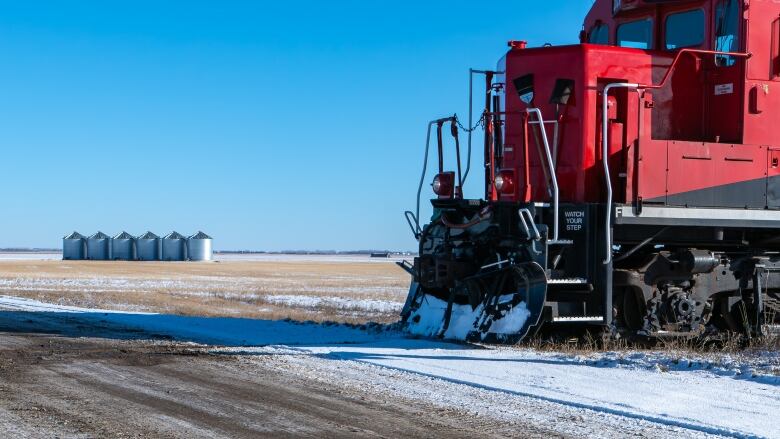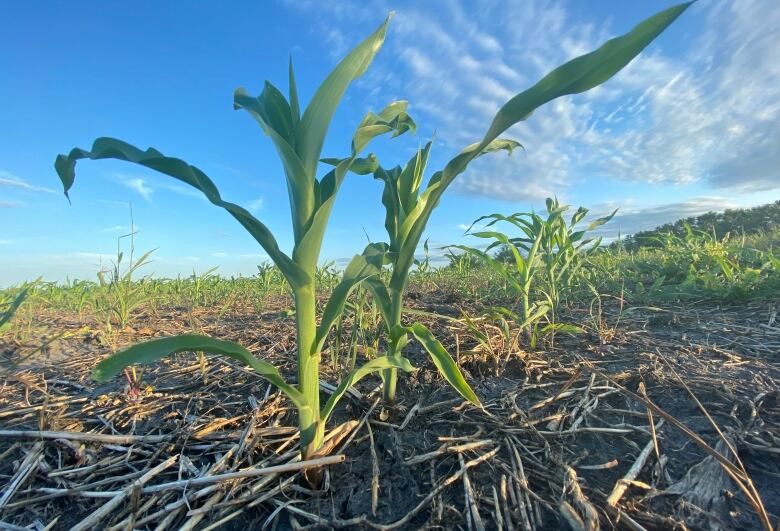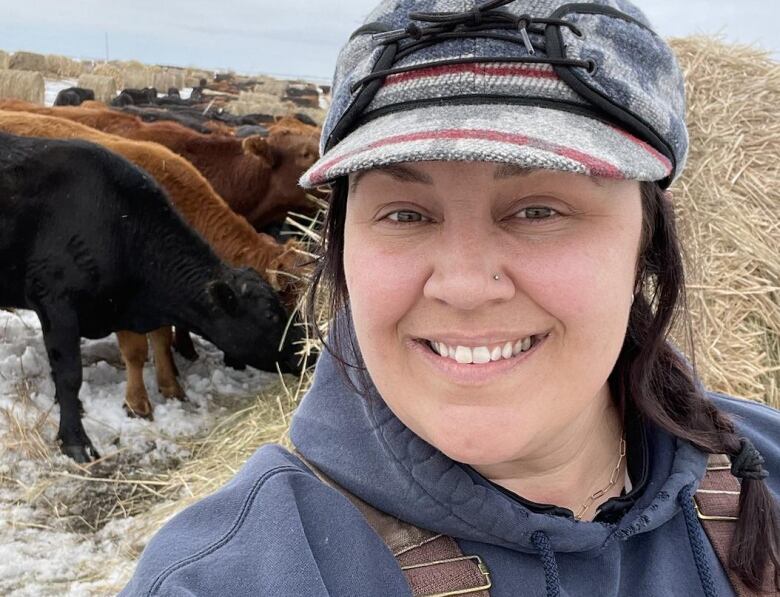Despite low snowfall, 'it's pretty early to start panicking,' southwestern Manitoba farmers say
Cautiously optimistic, but 'if we don't get some snow it could be an interesting year,' says Pipestone rancher

Some southwestern Manitoba farmers say they're remaining cautiously optimistic about the 2024 growing season despite a lack of snow across the Prairies so far this winter.
Mark Humphries hastaken his tractor out to clear snow only once this winter at his farm near Kola, close to the Manitoba-Saskatchewan border, where he grows hay and raises grazing stock.
"Compared to previous years, the snow piles and the snowbanks in the yard are almost next to none," Humphries said. "It's getting a little bit concerning there's not going to be any residual water."
Without more spring moisture for crops and cattle, producers could be looking at a drought like the one they saw in 2020-21. In ideal conditions, most Manitoba crops are planted at the end of April and into early May and June.
The Manitoba Hydrologic Forecast Centre's 2023 fall conditions report, released last month, forecastnormal to below-normal precipitation and above-normal temperatures over the winter and spring.

While those factors "are possible indicators of lower spring runoff levels," the report says it's too early to forecastspring runofffor this year, sinceconditions could change.
"That snow catch is really important," Humphries said. "We can do with some water reserves for these drier years. It's really important for livestock producers and grain producers."
But producers need a balance of weather they don't want to go from light moisture to massive storms, he said.
He's keeping his fingers crossed for some snowfall soon.
'Abig unknown at this point'
Melissa Atchison's southwestern Manitoba farm has more snow than a lot of the province but that's still not a lot.
"I am just cautiously optimistic," said Atchison, a research and extension specialist with Manitoba Beef Producers who ranches nearPipestone, southwest of Brandon.
While it's not the worst winter she'sseen, it gives her flashbacks to the 2020-21 winter that led to a horrible drought.
She's already heard reports of people hauling water for livestock, which can be unusual and expensive for producers.
Even her ranch had to briefly haul water something they rarely do because the operation has aquifer access.

"If we don't get some snow it could be an interesting year," Atchison said. "There could be, you know, some choices that have to be made, whether that's cutting back on cowsto manoeuvre around weather patterns."
Drought conditions can have long-lasting effects that can lead to years of challenges for the agriculture industry, she said.
Gerry Friesenhas heard a lot of concerns especially from producers in the grain industry about the lack of snow.
He's the chief administrative officer for the Manitoba Farmer Wellness Program,which aims to improve farmers' mental health by connecting them with counsellors with a background in agriculture.
"It's a big unknown at this point, and that creates stress and that creates worry and that creates anxiety," Friesen said.
Anxiety about the weathercomes on top of increased costs and high interest rates that also have an effect on the mental health of agricultural producers.
"When you're a grain producer, you've got one chance per year, and so you invest all these dollars to put a crop in the field," Friesen said.
"We're now into the part of the year where farmers are planning for this year.When they look out the window, that's cause for concern and worry for them."
'A lot of time before spring planting'
Daryl Domitruk, the executive director of the Manitoba Pulse and Soybean Growers, says while this winter is unusual, producers have faced similar snowfall patterns in the past.
"Nobody's panicking,"said Domitruk, who has 30 years of experience working in Manitoba.

"It's a little bit more complicated than just wishing that there was more snow or more moisture in the soil.There's a lot of time before spring planting," Domitruk said.
Over time, "people kind of add to their toolbox when they do need to cope and pivot in response to what Mother Nature's giving them."
Jason Claeys's farm has just enough snow to cover the ground.
"I never panic too much about snow," said Claeys, a grain producer west of Deloraine.
"It's not the first year we've had a winter where there was no snow at Christmas. It's pretty early to start panicking."
Claeys's farm has been using a zero-tillapproach where the earth is left untouched, instead of broken up to prepare for planting for crops, which is helping tocapture and hold much-needed moisture in drier years, he said.
In October, the farm saw a wet snowfall that soaked into unfrozen soil. Claeys says they're banking on that having replenished some soil moisture.

What's needed for Manitoba now is heavy and wet snow closer to seeding, because those storms carry a lot more moisture, he said.
"It's when you get into the start of May and the ground is dry and there's no rain in the forecast then that's when tough decisions [become] a lot more stressful."












_(720p).jpg)


 OFFICIAL HD MUSIC VIDEO.jpg)
.jpg)



























































































